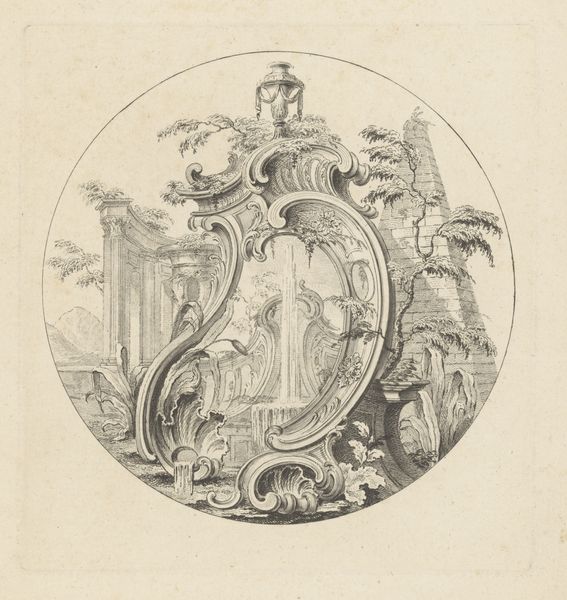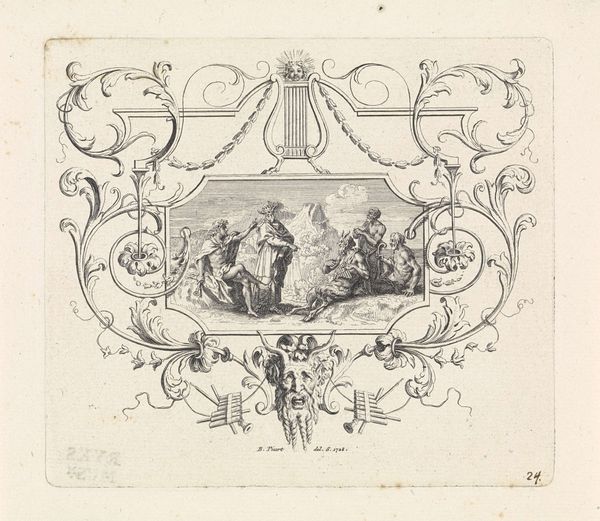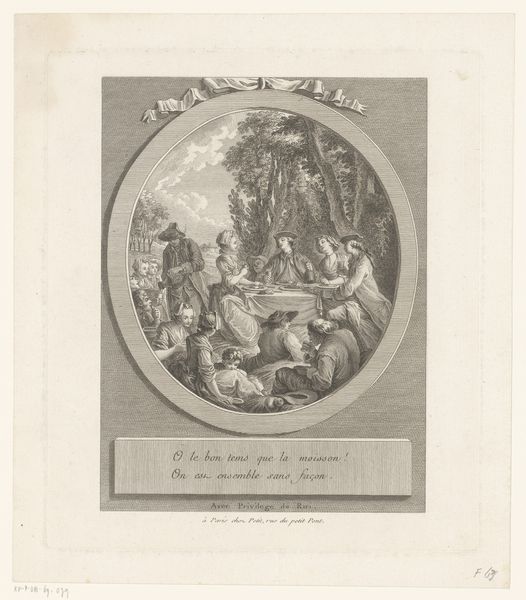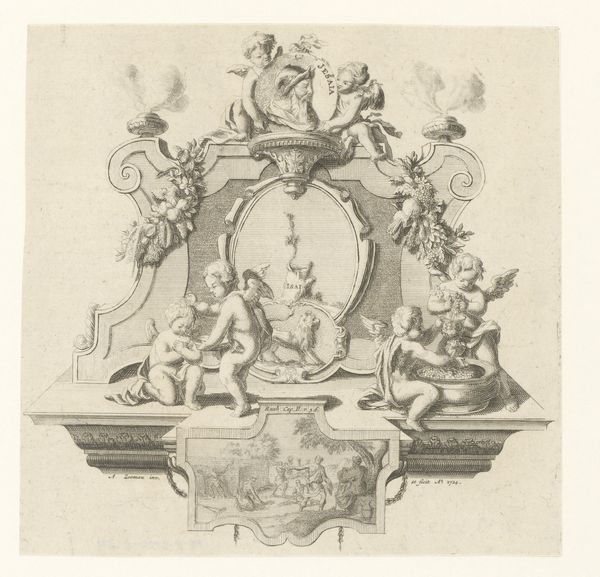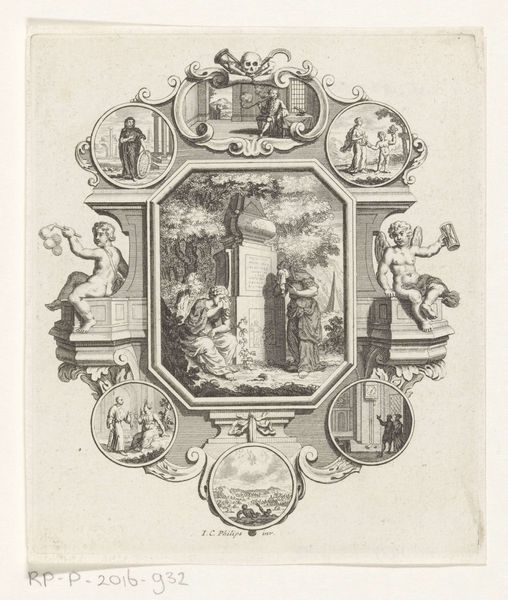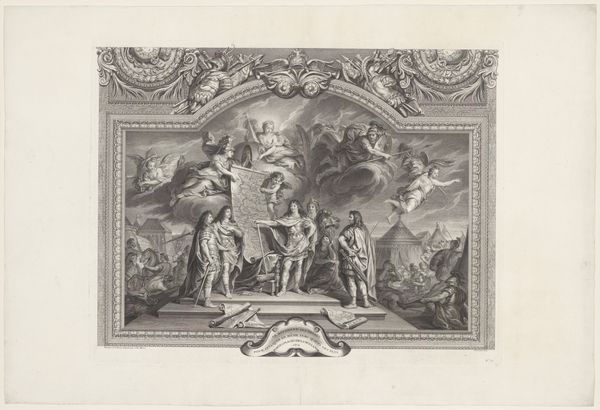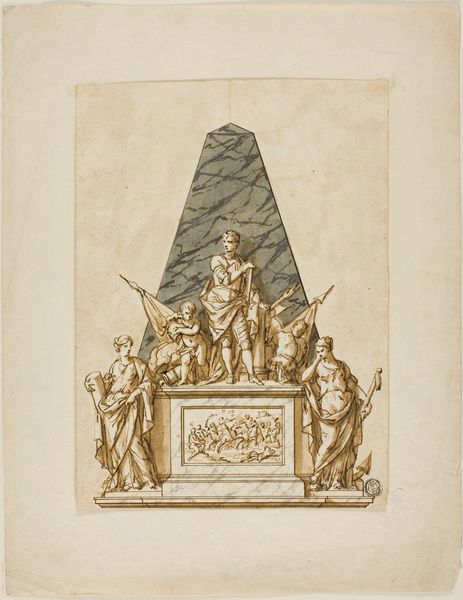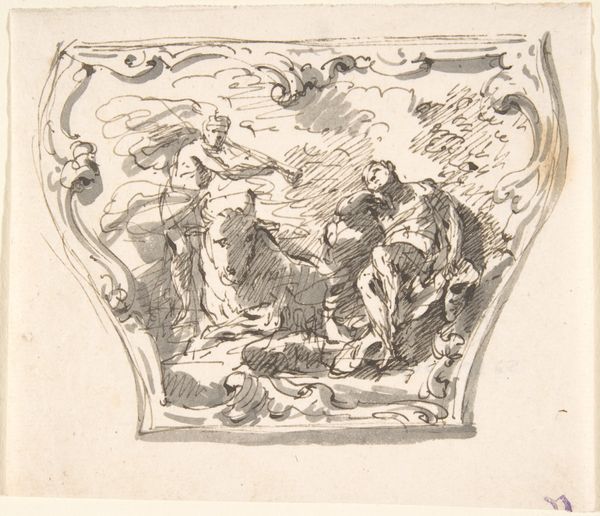
drawing, print, pencil
#
portrait
#
drawing
#
allegory
# print
#
figuration
#
pencil drawing
#
pencil
#
history-painting
#
italian-renaissance
Dimensions: 5-3/4 x 5-9/16 in. (14.6 x 14.2 cm)
Copyright: Public Domain
Curator: Here we have "Nobility Presenting an Infant to Venice" by Francesco Zugno, an Italian artist active during the 18th century. It's a pencil drawing, a preparatory study, residing at the Metropolitan Museum of Art. Editor: The ethereal quality of this work immediately strikes me. It feels like a half-remembered dream, or a fading emblem. The round composition almost makes it resemble a coin or a commemorative medallion, even if the material, a drawing, stands apart from that impression. Curator: Absolutely, that circular format lends it an almost self-contained quality, a portable symbol. It focuses attention. Note how Zugno utilizes a dense network of lines to model form and light; the physical act of applying pencil to paper to communicate status, worth. Think about what a laborious, demanding undertaking that must have been! Editor: The central figures, especially the enthroned Venice and the infant presented to her, radiate authority, drawing inspiration from traditional representations of the Madonna and Child, reinforcing the importance of dynastic succession. This deliberate deployment of established imagery gives Venice both power and a spiritual, almost divine right to rule. Note also the careful and meaningful inclusion of Saint Marks lion. Curator: And behind Venice, consider the meticulously rendered drapery; Zugno skillfully utilizes varying pencil strokes to capture the heavy folds of fabric. These are material objects indicative of the noble status, indicative of how wealth and skill are materially interwoven here. These kinds of works allow us a lens into period studio practices. Editor: Exactly. It underscores the weightiness of the occasion, visually expressing both the burden and the promise inherent in this symbolic presentation of an heir to Venice. The infant becomes more than a child; he is an allegory of hope, of continued Venetian dominance. Curator: Indeed, the artwork itself becomes a tangible symbol of cultural and political aspirations. Thinking through these details illuminates art making as an activity anchored to broader issues related to its socio-historic location. Editor: Agreed. Seeing it now, it feels richer, weighted with implications—a delicate balance between tangible materials, enduring images and symbols. Curator: Precisely. And the pencil medium reminds us that even the most imposing displays of power start with human labour.
Comments
No comments
Be the first to comment and join the conversation on the ultimate creative platform.

